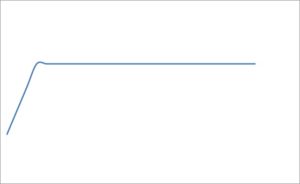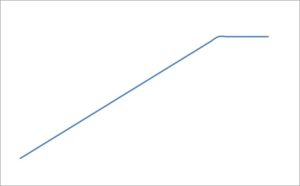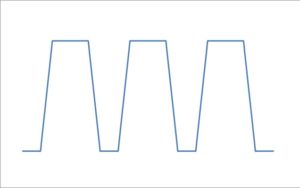Research units, options and controls
AquabioLab units, Controls and Options
This page details the types of controls available on Aquabiotech manufactured research equipment as well as the various options that may be added to the units to expand and customize them to meet your research goals.
The parameter drops or rises and stabilizes in a plateau for a given period of time. After this period, the parameter increases or decreases automatically at the same rate to reach and maintain a second plateau. The cycle repeats itself.
To set in a cyclic fluctuation, the operator enters:
- -The first level wanted
- -Time to reach and maintain that level
- -The second level wanted
- -Time to reach and maintain that level
Dynamic control over the drop and rise phases of the cycle can be incorporated by setting a given rate (ex: 1.0°C/h). Otherwise, the rise and drop occur as fast as the system can go.
Individual Parameters
Our specialized laboratory research equipment can actively control several parameters simultaneously. Generally, when one parameter is going through fluctuations, the other parameters are kept stable (static).
For instance, the natural photoperiod of the northern hemisphere can be simulated, while pH is kept at 7.6, dissolved oxygen at 70% saturation, and temperature fluctuating in cycles between 5 and 7°C in 24-hour periods.
Due to chemical or gas interferences, some parameters cannot be precisely controlled simultaneously. The table below illustrates the suitable parameters mix.
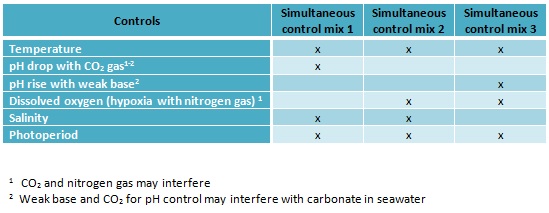
The level of dissolved oxygen can fluctuate between hypoxia, normoxia and hyperoxia in a multi-stressor unit. Hypoxia and hyperoxia conditions are created with a mix of nitrogen gas, oxygen gas and air. The purity of nitrogen plays an important role on the level of hypoxia obtained and the rate of drop.
Static control: Precision: ± 0.1 mg/L – Water 100% recycled.
Dynamic control: Precision: ± 0.1 mg/L – Water 100% recycled.
Cyclic fluctuations: Precision: ± 0.1 mg/L – Water 100% recycled.
Seasonal cyclic fluctuations can be obtained. The lowest and highest level wanted needs to be manually modified every 1-3 weeks to accomplish seasonal fluctuations.

Static, dynamic and cyclic control of water temperature control (± 0.3 °C)
• Includes salinity-resistant temperature probe, quiet chilling compressor with titanium heat exchanger, water heater, and controls.
• Insulated units: 4-35°C (room temperature at 20°C)
• Non-insulated units: 15-35°C (room temperature at 20°C)
For water temperatures ranging from 4-35°C, racks are enclosed with insulated panels, reducing chilling requirements, operating costs, and condensation. Plus, the covered habitat eases photoperiod control with light ramping. Colder temperatures are available.

Currently, only the static control of salinity is offered and done by the Enviro-Monitron via the controlled inflow of concentrated seawater (e.g. 50 PSU) and freshwater.
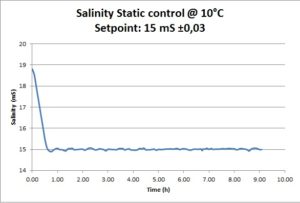
The control of the pH can be static and dynamic. However, the means of controlling it is optional.
The pH levels in our MSU can be lowered with the controlled injection of CO2 gas or a weak acid, in both seawater and freshwater. pH is raised via aeration or a weak base. Aeration will be sufficient in most cases for fresh and seawater. To raise pH above the normal pH of given water, a weak base is necessary.
Please note that in water recycling systems, pH gradually drops due the H+ ions produced through nitrification. This assembly can automatically add a diluted base on a gradual basis to maintain pH at the desired set point.

Reduces light stress and allows for complete photoperiod manipulations.
Photoperiod control is often integrated to better mimic the natural environment: light emitting diodes (LED) over each shelf. They can modulate light intensity, recreating dawn and dusk and natural circadian rhythms.
The photoperiod cycles are controlled by the Monitron, featuring:
LIGHT DIMMING – The Enviro-Monitron controls each light circuit, modulating light intensity above the shelf. Sunrise and sunset are simulated, creating a more natural environment. The gentle light ramping generated significantly reduces light stress created by the sudden turning on/off of lights.
ASTRAL CYCLE – Fixed L/D cycles or natural circadian rhythms can be created with the Monitron. Therefore, for any geographical position (longitude, latitude) and date you enter, a natural photoperiod is created with increasing day length in spring, for instance. Photoperiod cycles of any part of the world can be simulated.
Change season length
The photoperiod controller can increase or shorten seasons, and modify the duration of the year. For example, a year can be made with a short winter followed by a long spring. Ideal for breeding control!
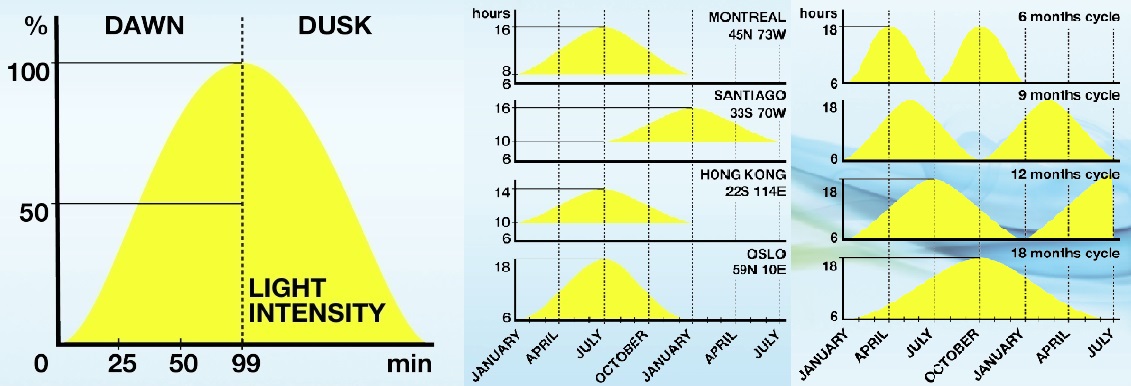
Options
Many options are available for conducting a wide range of experimentation, making your Multi-stressor unit a flexible product to meet not only your current needs but also for the future.
Large fish or large crustaceans may not fit into 9-L tanks. Some researchers have replaced their 9-L tanks with their own larger tanks on their Multi-stressor units (e.g. with 20-30- L tanks). Keep in mind that the factory-built flow rate to the habitat will be appropriate for these larger tanks as well as the water filtration system. If they are not self-cleaning, siphoning the tanks occasionally should be required. The filtration system may also need more frequent cleaning if the recommended feed rate for the unit is exceeded.
Should you wish larger tanks incorporated in the system at delivery, simply let us know. We’ll be happy to select basins that fit your application.
Another option for large fish is to purchase one or more self-contained water recycling with biofiltration (REBF) systems of larger biomass capacity. We will link them to larger tanks. The wanted controls will then be integrated ‘à la carte’ into the REBF system. As a result, you may obtain a system like this one with 4 x 70-L tanks.
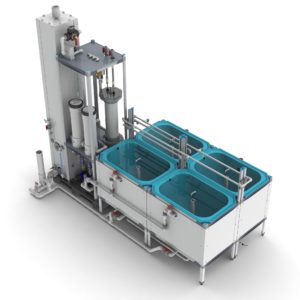
Insulated panels are optional with integrated photoperiod control. They can be omitted in warmer water. Our experience indicates that insulation is not required when the coldest water temperature is 15°C and the ambient air temperature is 25°C or less.
Photoperiod control is also available for larger tanks. LEDs are simply inserted in opaque lids and connected to the Enviro-Monitron.
To create hypoxic conditions down to 1.5 mg/L DO, nitrogen gas with a purity of 99% or more is recommended. We can provide nitrogen generator tailored to your Multi-stressor units in option.
Description
State-of-the-art membrane separation technology produces dry nitrogen up to 99% pure.
Provides control over the rate and purity of nitrogen gas production (up to 10 SCFH at 99% purity). The generator may operate at pressure rating from 90-150 psi for 95-99% purity. It requires oil-free and water-free air.
The generator will be connected to the DO control system of up to three Multi-stressor units, which will automatically adjust the flow of air, oxygen and nitrogen gas. The operation is always quality-tested in Coaticook, Quebec, Canada before delivery.
Some applications ask for 100% or supersaturated water with oxygen gas. In this case, an oxygen generator can be added as an option. Otherwise, an oxygen cylinder can be used.
In this custom-design system, water temperature drops to 0°C ± 0.3°C in brackish water (room temperature at 20°C or less, salinity at 10 PSU or more). To achieve this goal, we use a central glycol refrigeration system maintained at -4 ° C.
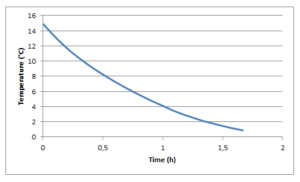
We also custom-build glycol chilled systems, chilling and heating water at a very high rate (10°C/h).





